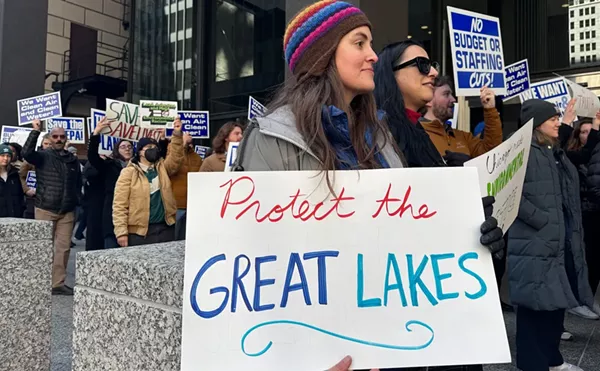As Slate’s Jack Shafer noted last month, everybody is doing the “Barack Obama election=surge in gun sales” story. AP, Globe and Mail, Chicago Tribune, Kansas City Star and Anchorage Daily News were on his partial list. Detroit’s own Freep followed on Nov. 23, 10 days after Shafer’s piece, with Korie Wilkins’ “Election spurs gun sale boom; owners worry Obama will increase restrictions.”
The story followed the national script with recent stats from Wayne, Oakland and Macomb counties. Oakland, for instance, recorded 769 concealed weapons permits in October 2008 compared with 328 in October 2007.
Obama backs, as Wilkins quotes from the Obama website, “commonsense measures that respect the Second Amendment rights of gun owners.” Specifically he has said he’ll close a loophole allowing the purchase of firearms without background checks at gun shows and renew the expired federal ban on assault weapons.
Hence the mentality of get-them-while-you-can — and a surge in sales.
But we’d like to pull some coattails to two bigger-picture stories published online.
First, there’s Shafer’s “Pressbox” column, which looks at the long-term trends in gun ownership in the United States. He makes the case that rises in gun ownership are making news now, but some significant declines of the past decade — going back to the first full year of background check data in 1999 — have gone virtually unnoticed.
More startling, he cites data from the National Opinion Research Center at the University of Chicago. According to NORC, “gun ownership has been falling since 1977 when 54 percent of households reported owning a gun, compared with 34.5 percent in 2006.”
And Shafer complains that none of the articles he’d seen have distinguished between new gun owners and current owners adding to their arsenals. (Since Wilkins’ story concentrated on concealed weapons permits, that criticism doesn’t hold for the Freep piece.)
Meanwhile, freelance journalist Alexander Zaitchik at Alternet has a thought-provoking article under the heading of “Untold Story of Election 2008: The Death of the NRA.” Zaitch writes:
Although the gun group unleashed everything in its arsenal to defeat Barack Obama and dozens of down ticket gun-control candidates, it lost by a margin as historic as the war chest it opened in an attempt to convince voters that Democrats were mortal enemies of the Second Amendment. Despite expending nearly $7 million in a national fear campaign, NRA-endorsed candidates lost 80 percent of their races against gun-control candidates. More than 90 percent of candidates endorsed by the NRA’s nemesis, the Brady Campaign to Prevent Gun Violence, won their races. If 2008 was, in the NRA’s own words, “arguably the most important year in its history,” then the election results suggest that the gun group is arguably the most overhyped and impotent special-interest lobby in the country. The NRA even got its chamber cleaned in its home state of Virginia.
In fact, Zaitch goes on to argue, “sensational stories about booming holiday-season gun sales obscure a more profound phenomenon: the coalescence of a new consensus, joined by the majority of the nation’s gun owners, in favor of what gun controllers call ‘commonsense reform.’”






